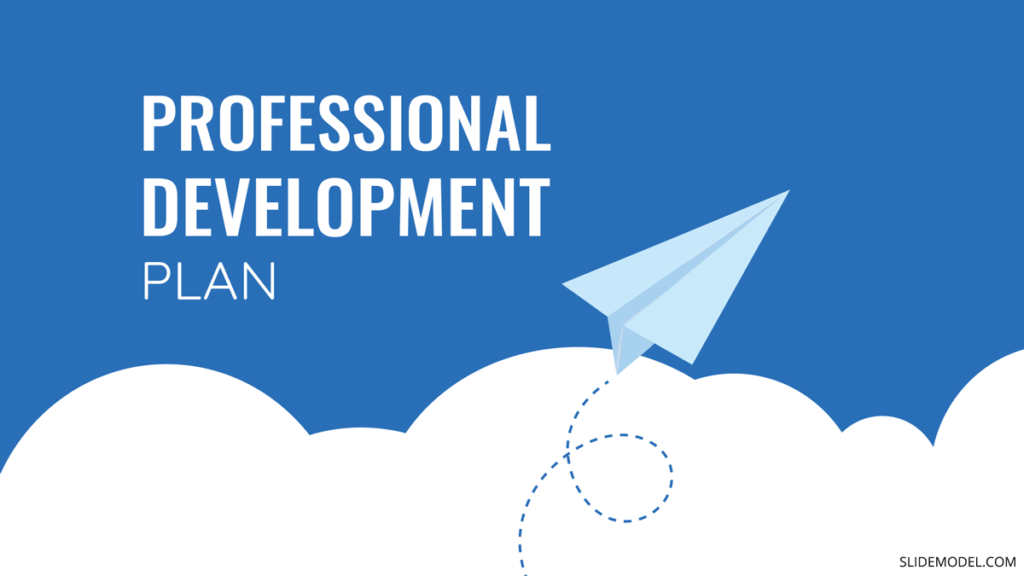Rethinking Professional Development: Lessons Corporate Trainers Can Learn from EdTech
Corporate trainers face growing challenges as traditional methods of professional development struggle to keep up with the ever-changing demands of today’s workforce. EdTech—born from the need to innovate in education—has emerged as a powerful tool to transform how organizations approach employee learning. From personalizing training to fostering continuous engagement, it offers insights that corporate trainers can no longer afford to ignore. This post explores how lessons from EdTech can reshape and enhance professional development strategies, ensuring they’re more effective, dynamic, and aligned with modern needs.

The Current State of Professional Development
In today’s rapidly evolving workplace, professional development has become a cornerstone of employee satisfaction and organizational growth. Yet, traditional training models often fall short in addressing the complexities of modern professional needs. As businesses navigate an ever-changing landscape, the call for more customized, practical, and engaging learning experiences has never been louder. This section breaks down both the traditional approaches to corporate training and the modern challenges shaping the future of professional development important for career growth and advancement.
Traditional Approaches in Corporate Training
For decades, professional development in the corporate world has relied on familiar methods:
Workshops and Seminars: Typically in person, these sessions involve structured content delivery over a few hours or days. They’re great for covering large topics quickly but fail to offer long-term retention or relevance for individuals.
Classroom-Style Training: Mimicking school environments, this method involves a trainer teaching a group of employees. While organized, it often lacks interactivity and doesn’t cater to varying learning paces.
E-Learning Courses: Early iterations of online training were mostly “click-next” slideshows or static PDFs—convenient but often devoid of engagement or adaptability.
While these approaches provided a foundation for skill-building, their drawbacks have become increasingly apparent. Most traditional models are:
One-Size-Fits-All: They don’t account for differences in backgrounds, job roles, or learning preferences.
Limited Flexibility: Fixed schedules and one-off sessions clash with today’s busy, unpredictable work environments.
Low Engagement: Static content and lecture-heavy formats often fail to capture the learner’s attention, leading to poor knowledge retention.
Hard to Scale: Coordinating in-person or location-specific training for growing global teams can be a logistical nightmare.
These shortcomings reveal why static approaches aren’t enough to prepare a modern workforce for real-world challenges.
Modern Needs for Professional Development Opportunities
The professional development landscape is evolving to meet a new set of demands driven by shifting employee expectations and the need for continuous learning.
Career training is a crucial component of continuing education that helps professionals stay up-to-date with trends and advance in their careers.
Why Companies Need to Adapt:
Customized Learning Paths: Employees no longer want generic content. They expect personalized and relevant training that aligns with their roles and goals. For example, an entry-level employee’s needs will differ greatly from a seasoned leader looking to refine their skills.
Demand for Flexibility: Between remote work and global teams, training must be available anytime, anywhere. Microlearning modules, self-paced courses, and mobile-friendly platforms are vital to meet these expectations.
Focus on Retention and Growth: A LinkedIn study revealed that 94% of employees would stay at a company longer if it invested in their development. Tailored opportunities for upskilling and reskilling can curb turnover and ensure skilled employees remain engaged.
Employee-Driven Learning: Modern professionals value autonomy. Learning systems should empower them to choose topics, identify areas for growth, and direct their own paths.
The Impact of Continuing Professional Education:
Businesses now operate in environments where industry trends and technologies change rapidly. Static, once-a-year training sessions won’t cut it. Ongoing professional development ensures employees stay current and adaptable.
Major benefits include:
Improved job performance through hands-on, real-world learning.
The ability to close skill gaps, especially in fields like data analytics and AI.
Learning a new skill can significantly enhance career advancement and personal growth.
Greater team collaboration and alignment, which is crucial for hybrid work models.
Addressing these needs isn’t just a perk; it’s a necessity. Employees with access to forward-thinking training are 43% more productive, and companies that prioritize L&D are far better equipped to retain top talent. Simply put, professional development must align with the way people work and learn today—not yesterday.
This evolution is reshaping corporate training into something much more dynamic and impactful, paving the way for fresh strategies to come.
The Importance and Benefits of Professional Development

Understanding the Importance of Professional Development
In the fast-paced and ever-evolving professional landscape, staying competitive requires more than just experience—it demands continuous learning and growth. Professional development is crucial for acquiring new skills and knowledge that can propel career advancement and personal growth. By engaging in ongoing professional development, individuals can keep pace with the latest industry trends, technologies, and best practices. This not only enhances their job performance but also opens doors to new career opportunities and higher earning potential. Investing in professional development is not just about staying relevant; it’s about positioning oneself for long-term success and career advancement.
Exploring the Benefits of Professional Development
The benefits of professional development extend far beyond immediate job performance. Here are some key advantages:
Career Advancement and Promotion Opportunities: Engaging in professional development courses can make you a prime candidate for promotions and leadership roles.
Increased Earning Potential and Job Satisfaction: Acquiring new skills and competencies can lead to higher salaries and greater job satisfaction.
Improved Skills and Knowledge in a Specific Area: Specialized training programs enhance your job-specific knowledge, making you a more skilled employee.
Enhanced Professional Network and Connections: Participating in professional development opportunities allows you to build a robust professional network.
Increased Confidence and Credibility in One’s Field: Earning professional certificates and continuing professional education boosts your confidence and credibility.
Improved Job Prospects and Career Opportunities: Staying current with industry developments improves your career opportunities and job prospects.
Ability to Stay Competitive in a Rapidly Changing Work Environment: Ongoing professional development ensures you remain competitive and adaptable in a dynamic work environment.
These benefits underscore why professional development is important for both personal and professional growth.
Key EdTech Innovations Transforming Learning
Educational technology (EdTech) has revolutionized the way learning is structured, delivered, and experienced across a wide spectrum of users—from K-12 to corporate training environments. By utilizing the latest technologies, organizations are creating smarter, more agile training strategies that align with how people learn best today. For corporate trainers, understanding these innovations is a gateway to designing professional development programs that actually work.
Personalized Learning Through Artificial Intelligence
Artificial intelligence (AI) has made personalized learning a reality, reshaping how training programs are designed and delivered. AI-driven platforms analyze a learner’s performance, preferences, and gaps to create customized learning paths. Instead of forcing every learner into the same rigid structure, these systems adapt in real time to ensure relevance and engagement.
AI tools can recommend modules, topics, or resources based on an employee’s role, skill level, or interests.
For example: If someone struggles with a concept, the AI might offer additional exercises or break down the topic further for clarity. On the flip side, high-performing users can skip redundant material and focus on advanced lessons.
This approach empowers learners, making training feel more contextual and specific to their needs. Corporate trainers can use these tools to save time, ensuring every session adds value rather than just checking a box.
Gamification and Engagement Strategies
Learning doesn’t have to feel like a chore, and gamification methods are proof of that. By incorporating game design elements such as leaderboards, progress badges, and rewards, companies are encouraging employees to stay actively engaged in their training programs. Here’s how gamification keeps motivation high:
Healthy Competition: Leaderboards appeal to competitive spirits, as employees strive to improve their standing among peers. Friendly rivalry can boost participation rates significantly.
Recognition and Rewards: Progress badges give learners something tangible to work toward, which taps into our natural desire for accomplishment.
Immediate Feedback: Just like in video games, instant acknowledgment of progress—whether through points, animations, or level unlocks—keeps the momentum going.
When employees feel incentivized to learn, they internalize the content more effectively. But gamification isn’t just about fun—it’s about improving learning outcomes by linking engagement with retention.
Data-Driven Insights for Continuous Improvement
Modern EdTech platforms not only deliver learning experiences but also track, measure, and analyze them in meticulous detail. Data analytics offers corporate trainers an unprecedented opportunity to improve their programs continuouslybased on hard evidence.
By reviewing learner performance metrics, companies can pinpoint areas where employees struggle most or where instructional methods fall short.
Trends can guide trainers on which materials to update, replace, or expand, ensuring the curriculum remains relevant and effective.
For instance, if data reveals that employees in sales roles repeatedly fail assessments in negotiation scenarios, trainers can enhance this module with more practical simulations or role-playing exercises. The result? A more targeted and impactful professional development program.
Beyond identifying weaknesses, analytics can also highlight strengths. Organizations can replicate successful strategies across teams, ensuring consistency in skill-building. With real-time data, the days of relying on guesswork to evaluate training effectiveness are over.
Personalization, engagement, and data insights are no longer optional; they’re foundational elements of modern professional development. Corporate trainers who incorporate these EdTech innovations are not only improving skill-building efforts but also meeting the expectations of today’s workforce.
Lessons Corporate Trainers Can Learn from EdTech

Corporate training is evolving, just like education. The rise of EdTech has ushered in innovative tools and methods that corporate trainers can adapt to meet the growing demands of professional development. Not only does it challenge outdated models, but it brings forward solutions that align with modern learner expectations. Below, we’ll explore three important lessons corporate trainers can take from EdTech to create more impactful, inclusive, and future-forward training programs.
Adopting Agile Learning Strategies
Gone are the days when a one-size-fits-all training program could address the diverse needs of a workforce. EdTech has shown that flexibility and real-time adaptability are essential for keeping learners engaged and helping them retain knowledge. Agile learning focuses on breaking training into smaller, manageable components that can be adjusted based on performance or feedback. This mirrors how tech companies approach software development—a quick rollout followed by iterative improvements.
For corporate trainers, this means designing programs that are dynamic and responsive. Instead of annual or quarterly training sessions, consider these strategies:
Offer Modular Content: Provide short, focused training sessions employees can access as needed rather than committing to lengthy courses.
Implement Feedback Loops: Use micro-assessments after each module to understand what’s working and adjust immediately.
Stay Relevant: Update content regularly to align with organizational goals or industry changes.
Agile learning ensures that training is not static and allows professionals to engage with what’s most relevant to their current tasks—without feeling overwhelmed. This approach reflects the needs of today’s workforce, which values real-time adaptability over rigidity.
Leveraging Technology to Enhance Accessibility
EdTech has revolutionized how learning is delivered, breaking down barriers of location, time, and even accessibility for those with disabilities. Digital tools like Learning Management Systems (LMS), mobile apps, and virtual classrooms make it possible for employees to learn anytime, anywhere. For remote or hybrid teams, this isn’t just convenient—it’s essential.
Corporate trainers can take lessons from EdTech’s emphasis on inclusivity by initiating technology-driven changes, such as:
Supporting Multi-Device Access: Ensure that training materials are optimized for computers, tablets, and smartphones.
Integrating Closed Captions and Translations: Make programs globally accessible by offering options for learners who speak different languages or have hearing impairments.
Allowing Flexibility in Pacing: Self-paced learning platforms give employees control over their schedules while maintaining accountability through progress tracking.
By utilizing tech-driven accessibility tools, organizations not only empower diverse teams but also set the stage for equal opportunities for professional development, regardless of location or ability.
Building a Culture of Continuous Learning for Career Growth
EdTech isn’t just about tools or delivery—it’s also shaping attitudes toward lifelong learning. Modern education systems emphasize ongoing growth rather than one-off successes, and the same philosophy applies to professional development. Up-to-date skills are the cornerstone of success in industries that evolve quickly, and this mindset begins with cultivating a learning-first culture within organizations.
Corporate trainers can drive this cultural shift by:
Promoting Microlearning: Encourage employees to take small learning breaks daily through bite-sized modules.
Recognizing Learning Progress: Celebrate milestones, whether it’s a completed course, new certification, or improved performance metrics.
Embedding Learning in Daily Tasks: Use technology like workflow-integrated training tools to provide real-time learning aligned with job functions.
By fostering an environment where continuous education becomes part of the workplace DNA, employees feel empowered to pursue ongoing skill-building without it feeling like a burden. This creates a workforce ready to adapt to tomorrow’s challenges today.
Implementing EdTech Principles in Professional Development
As workplace learning evolves to meet the demands of an increasingly digital-first world, the integration of EdTech principles into professional development is no longer optional—it’s essential. EdTech offers flexible, data-driven, and learner-focused approaches to training that corporate trainers can adopt to better engage employees, address individual learning needs, and drive measurable results. Below, we explore three critical areas for implementing these principles effectively.
Creating a Professional Development Plan
A well-structured professional development plan is essential for achieving your career goals and objectives. Here’s how to create one:
Identifying Areas for Improvement and Development: Start by assessing your current skills and identifying areas where you need improvement.
Setting Specific, Measurable, and Achievable Goals: Define clear professional development goals that are specific, measurable, achievable, relevant, and time-bound (SMART).
Identifying Resources and Support Needed to Achieve Goals: Determine the resources, such as online courses, training programs, or mentorship, that will help you achieve your goals.
Creating a Timeline and Schedule for Achieving Goals: Develop a realistic timeline and schedule to track your progress and stay on course.
Evaluating Progress and Making Adjustments as Needed: Regularly review your progress and make necessary adjustments to your professional development plan.
By creating and following a professional development plan, you can take control of your career growth, achieve your professional development goals, and stay competitive in your industry. This proactive approach to career development ensures you are always moving forward, ready to seize new career opportunities and achieve professional growth.
Evaluating Technology Platforms and Tools
Choosing the right EdTech tools is the foundation of a successful professional development program. Not all technologies are created equal, and selecting the wrong platform can lead to wasted resources and disengaged learners. To ensure the best fit for your organization’s needs, consider these essential criteria:
Compatibility with Company Needs: The platform should align with your training objectives and support both broad company-wide initiatives and role-specific learning paths.
User-Friendly Interface: If the tool is complex, your employees will resist using it. Look for intuitive navigation and clean interfaces to encourage adoption.
Scalability: As your workforce grows, your chosen tool should be able to accommodate increased demand without sacrificing performance or usability.
Customization Options: Learning is not one-size-fits-all. Platforms that allow customization deliver more personalized experiences, which can improve retention rates.
Data and Analytics Capabilities: Choose technology that provides detailed metrics on learner progress, participation, and outcomes. This facilitates performance tracking and course optimization.
Before investing, companies should also conduct small-scale pilots with diverse user groups. Feedback from these initial trials will identify potential implementation hurdles and confirm the system’s usability across varying roles within the organization.
Upskilling Trainers for Digital Transformation
EdTech is only as effective as the people behind it. If trainers lack confidence or proficiency in using these tools, professional development programs will fall short of their potential. To overcome this, organizations need to support their trainers in mastering these technologies and shifting their mindset toward digital transformation. Here’s how:
Provide Dedicated Training: Run train-the-trainer workshops focusing specifically on new platforms and tools. These sessions should blend technical how-tos with strategies for aligning technology use with learning objectives.
Encourage Continuous Education: Digital transformation is ongoing. Trainers should have access to online courses, webinars, and certifications that keep them current with the latest advancements.
Emphasize Hands-On Experience: Theoretical knowledge isn’t enough. Give trainers time to practice using the technology within safe, simulated environments before applying it in real scenarios with employees.
Foster Peer Support Networks: Develop a community where trainers can share best practices, troubleshoot issues, and inspire each other through collaborative problem-solving.
When trainers feel confident in their ability to navigate technology, they’re better equipped to inspire confidence in learners. Supporting their development creates a trickle-down effect, boosting the effectiveness of programs company-wide.
Measuring Success and ROI in Professional Development Plan

A major advantage of incorporating EdTech into professional development is the ability to measure outcomes with precision. However, tracking effectiveness isn’t just about glancing at completion rates or satisfaction surveys. You need to dig deeper to evaluate success and return on investment (ROI). Start with these strategies:
Set Clear Metrics: Establish specific KPIs such as skill acquisition rates, application of knowledge in job roles, and improvements in productivity. Tie these directly to organizational goals.
Utilize Pre- and Post-Training Assessments: Measure employee skills and knowledge before and after training to determine knowledge retention and applied learning.
Monitor Engagement Levels: Use analytics to identify participation trends and pinpoint areas of high or low engagement. Are employees dropping out mid-course? Are specific modules repeatedly accessed?
Track Business Impact: Focus on long-term outcomes like increased team efficiency, reduced errors, or faster project cycles. Surveys and performance reviews can help gauge these impacts.
Perform Cost-Benefit Analysis: Evaluate hard data like increases in revenue or reductions in turnover against the costs of implementing the training.
Earning a professional certificate can also be a significant measure of success, providing a clear pathway for career advancement and professional development.
By leveraging these methods, companies can demonstrate concrete results, securing buy-in from stakeholders and ensuring continued investment in EdTech-driven programs. Success can also be shared with employees, reinforcing the value and purpose of their training experiences.
EdTech principles are changing the game for professional development, but only when applied thoughtfully. By selecting the right tools, empowering trainers, and measuring results with clarity, organizations can create impactful training programs that not only meet today’s demands but anticipate tomorrow’s needs.
Wrapping Up
Rethinking professional development through the lens of EdTech reveals a clear path forward: businesses must prioritize adaptability, engagement, and learner-focused strategies. The traditional, one-size-fits-all approaches to training no longer suffice in today’s dynamic professional environments.
By adopting EdTech principles such as personalization, gamification, and data-driven decision-making, corporate trainers can create impactful learning experiences that address individual needs while driving organizational results. This shift not only boosts employee performance but also strengthens retention and organizational agility.
The future of professional development belongs to those willing to innovate. Now is the time to embrace smarter, tech-enabled learning models to stay competitive and ensure long-term success.
Author
-

The PathBuilder team is a dynamic group of dedicated professionals passionate about transforming education through adaptive learning technology. With expertise spanning curriculum design, AI-driven personalization, and platform development, the team works tirelessly to create unique learning pathways tailored to every student’s needs. Their commitment to educational innovation and student success drives PathBuilder’s mission to redefine how people learn and grow in a rapidly changing world.
View all posts

















The PathBuilder team is a dynamic group of dedicated professionals passionate about transforming education through adaptive learning technology. With expertise spanning curriculum design, AI-driven personalization, and platform development, the team works tirelessly to create unique learning pathways tailored to every student’s needs. Their commitment to educational innovation and student success drives PathBuilder’s mission to redefine how people learn and grow in a rapidly changing world.